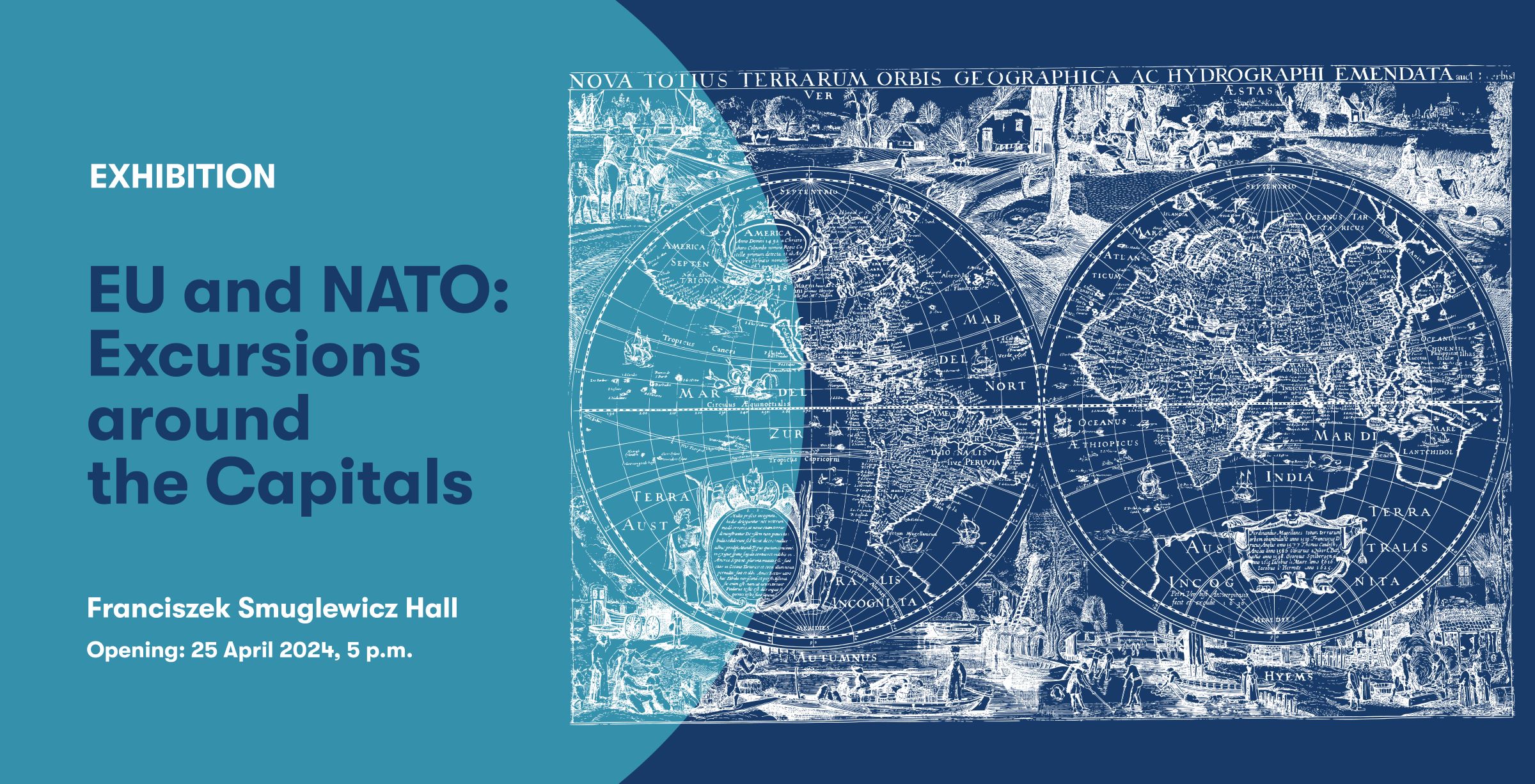
On 25 April, at 5 p.m. in Franciszek Smuglewicz Hall, the Library will be opening an exhibition dedicated to the twentieth anniversary of Lithuania’s entry into the North Atlantic Treaty and the European Union. Documents from the 16th to the 20th century that are associated with the capitals of both the European Union (including candidate countries) and the NATO members (41 states) were selected in the book storages and put on display in an exhibition.
The exhibition will invite visitors to become tourists and take a journey around the European states this time not by bus or by plane but with the help of manuscripts, books, maps, plans of cities, photos and other documents that reveal the rich historical past of the countries. During the opening, VU historian, associate professor Dr Tomas Čelkis will talk about the impressions of travellers who came to the Grand Duchy of Lithuania in the 16th – 18th century.
The exhibition mostly includes panoramas of European cities, plans of areas, including quite unexpected ones, such as plans of caves of Pechersk underground monastery in Kyiv, the capital of Ukraine. It will also be possible to explore old maps. Some of them are drawn by hand, such as the coastal map of Ireland with the capital Dublin marked on it that was copied from the 1546 navigation almanac by the hand of Joachim Lelewel. Printed maps of various countries with the current capitals of the EU and (or) the NATO states and the most significant cities-capitals of the time are also on display in the exhibition. The capital Vilnius that appears in a smaller version of the oldest original map of Lithuania by Mikołaj Krzysztof Radziwiłł the Orphan is among them.
When presenting the capitals of Europe, some books that are related to the capital of a particular state are also shown in the exhibition. These are books published in the capitals, such as the catechism in the Estonian language, the only copy in the world, printed in Tallinn in 1689, or a cookbook of recipes and a trilingual dictionary published in 1799 and 1781 in Ljubljana, the capital of Slovenia. The exhibition also shows books that in some ways are very significant for the country, for instance, the unique copy of Latvian hymnal by Juris Elgers that was published in 1621 or the most notable book for Lithuania, i.e. Lithuanian “Catechism” (1547; exhibit the facsimile of 2017) by Martynas Mažvydas.
Significant place in the exhibition is occupied by letters of Vilnius University written by professors of old European universities from various capitals of Europe to their colleagues teaching at Vilnius Academy. Head of Vienna University’s observatory Maximilian Höll wrote a letter to Marcin Poczobutt that is most interesting. The letter had an attachment bearing a copper print of the medal made out of platinum, a newly discovered metal, which was dedicated to the newly found planet Uranus.
It is probably for the first time that the Library shows six engravings coloured by hand that can be attributed to “vue d’optique” (optical view) genre, the depth and attraction of which can be seen only through a special device, namely a zograscope. Optical views will present objects in Spain, the United Kingdom, the Netherlands and Germany.
We are very proud that in this abundance of countries and cities of the world and Europe, the sights of Vilnius, our beloved capital of Lithuania, take their rightful place in the exhibition.
Date: 25 April 2024–14 June 2024 / 15 October 2024–31 January 2025.
Opening: on 25 April 5 p.m. Entrance is free.
Location: VU Library, Franciszek Smuglewicz Hall (Universiteto str. 3, ground floor).
2024-04-10
